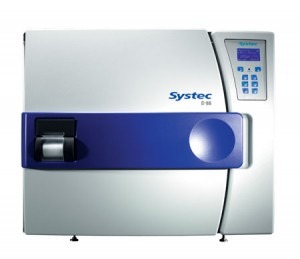
The new line of Systec laboratory autoclaves seeks to eliminate some of the most common pitfalls associated with sterilising liquids.
During a liquid sterilisation cycle, most autoclaves measure the temperature inside the chamber, not the temperature of the liquid being sterilised.
This introduces a major process error due to the fact that the chamber temperature will reach 121C before the liquid does.
A laboratory technician has no way of knowing if the liquid reached sterilisation temperature or for how long.
Because the liquid itself is its own sterilisation agent, it is imperative the autoclave measures the temperature in the liquid and not in the chamber.
To facilitate this, Systec autoclaves come equipped with a flexible PT100 temperature probe allowing users to safely and accurately ensure their liquids reach 121C.
The PT100 probe can be placed into a reference bottle in the chamber and once the liquid reaches sterilisation temperature the microprocessor will start the countdown for the defined sterilisation time.
Most liquid cycles end at 80C, but although the chamber may be 80C there is no way of knowing how hot the liquids are.
If the liquids are still at or above 100C when the autoclave is opened the liquid will rapidly expand into steam, risking boil-over, cracked or explosive bottles and possible injury to the user.
Measuring the temperature in the bottles with the PT100 eliminates that possibility.
Systec autoclaves will not allow chamber access until the liquid is at a safe temperature of 80C or lower.
This process not only replaces guesswork with traceability, it also replaces risk with safety.
The importance of accuracy and traceability for autoclave performance is increasing and to meet this need the PT100 temperature probe in Systec autoclaves can be calibrated to NIST standards by US-based technicians.




